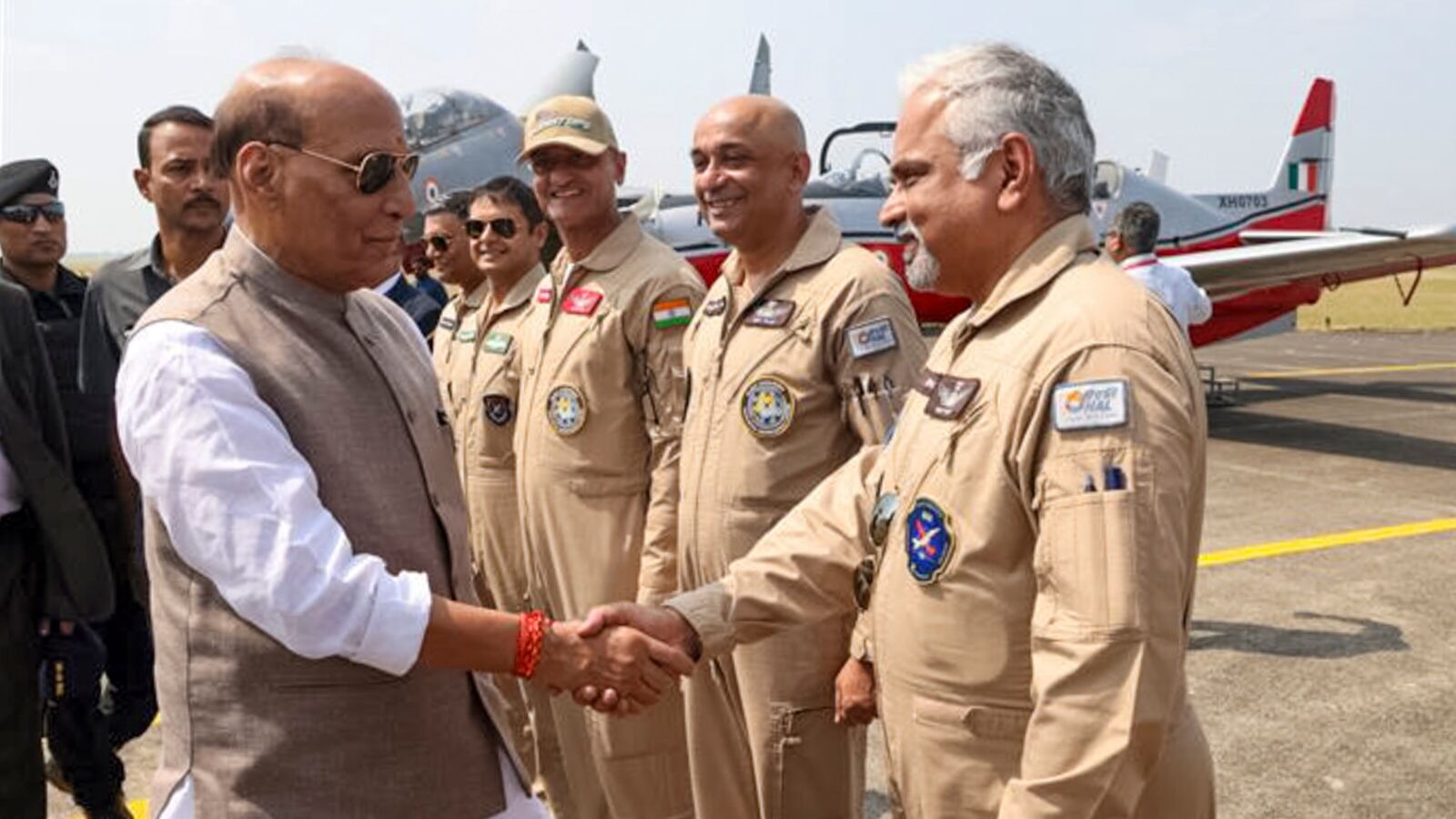Defense Minister Rajnath Singh on Friday lauded Hindustan Aeronautics Ltd (HAL) for providing round-the-clock maintenance support to the Indian Air Force’s fighter fleet at key frontline bases during Operation Sindoor, calling the aerospace giant the backbone of India’s defense sector. His comments came during the inauguration of two new manufacturing units at HAL’s production center in Nashik, one dedicated to the Tejas Light Combat Aircraft (LCA) Mk1A and another for the HTT-40 trainer aircraft. “In our security history, there have only been a few instances where the entire system has actually been tested simultaneously. Operation Sindoor was one such mission,” Singh said. “The HAL provided round-the-clock support at various operational sites throughout the operation. It ensured the operational readiness of the Indian Air Force by carrying out rapid maintenance on fighter jets and helicopters,” he said. In his remarks, the defense minister also noted the HAL’s integration of BrahMos missiles into Sukhoi-30 MKI jets and said the weapons destroyed many terrorist hideouts during Operation Sindoor. While underscoring the importance of self-reliance in defense to face future security challenges, Singh said India is looking at taking domestic defense production to 100 percent as dependence on foreign military supplies “creates strategic vulnerability.” Now India does 65 percent manufacturing on its own soil. Very soon we will also take our domestic manufacturing to 100 percent,” he said. The new production facility for Tejas MK1A will help HAL to produce at least 24 LCAs annually. HAL Chairman and Managing Director DK Sunil termed the successful operationalization of the LCA Mk1A and HTT-40 as a test production for the Naspace-40 manufacturing as a large-scale production. “The HAL Nashik division’s capacity to produce indigenous advanced fighters in addition to Sukhoi-30MKI added momentum to our production efforts to meet delivery timelines.” The defense minister said HAL’s Nashik team performed the “crucial task” of installing the BrahMos missile on the Sukhoi-30 MKI jets, which target terrorist hideouts during the operation. destroyed. said. Singh also witnessed a maiden flight by a Tejas LCA Mk1A manufactured at the Nashik facility. In his speech, Singh described the flight of the aircraft as a shining symbol of India’s growing self-reliance in defence. Emphasizing the transformation of the defense sector in the last decade, he claimed that India once had 65-70 percent of critical military hardware imported, now 65 percent of the equipment produced on its own land. The defense minister also praised HAL’s Nashik facility for playing a pivotal role in taking India’s defense manufacturing capabilities to “new heights” for more than six decades. From manufacturing and refurbishing fighter jets such as MiG-21 and MiG-27 to the production hub of Sukhoi-30MKIs, this campus has become a glowing symbol of India’s self-reliance in the defense sector, he said. Singh also pointed out that the ongoing construction of the LCA Tejas and HTT-40 aircraft is also the result of collaboration between various industry partners of the country. “This collaboration is proof that if government, industry and academia work together, no challenge is too great,” he said, acknowledging the confidence that the Indian Air Force has put in aircraft like Tejas and HTT-40. “When we came to power in 2014, we realized that without independence, we can never be truly safe. At the beginning, we faced numerous challenges, the biggest of which were ‘limited defense readiness’ and ‘import dependency’,” he said. “Everything was limited to state-owned enterprises, and the private sector had no significant participation in the production ecosystem. Moreover, there was not enough focus on defense planning, advanced technology and innovation,” he said. Singh said this forced the government to depend on other countries for critical equipment and cutting-edge systems, which increased costs and created strategic vulnerabilities. “This challenge encouraged us to move forward in the direction of new thinking and reforms. The results are visible today. We have not only reduced dependence on imports but also strengthened our commitment to indigenization,” he said. This proved that when it comes to national security, we can make our own equipment and protect ourselves with it. “Whatever we bought from abroad, we are now manufacturing it domestically, be it fighter jets, missiles, engines and electronic warfare systems,” Singh was quoted as saying by PTI.
Rajnath Singh lauds HAL’s round-the-clock ‘maintenance’ support to IAF during Operation Sindoor
